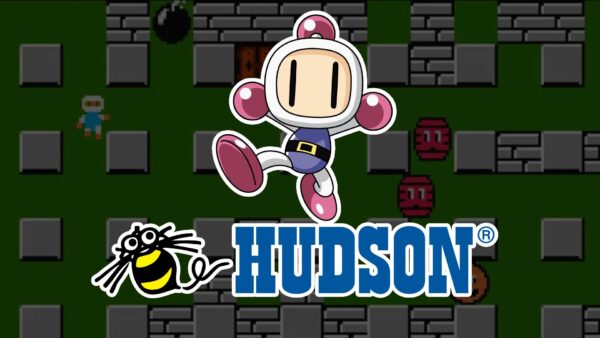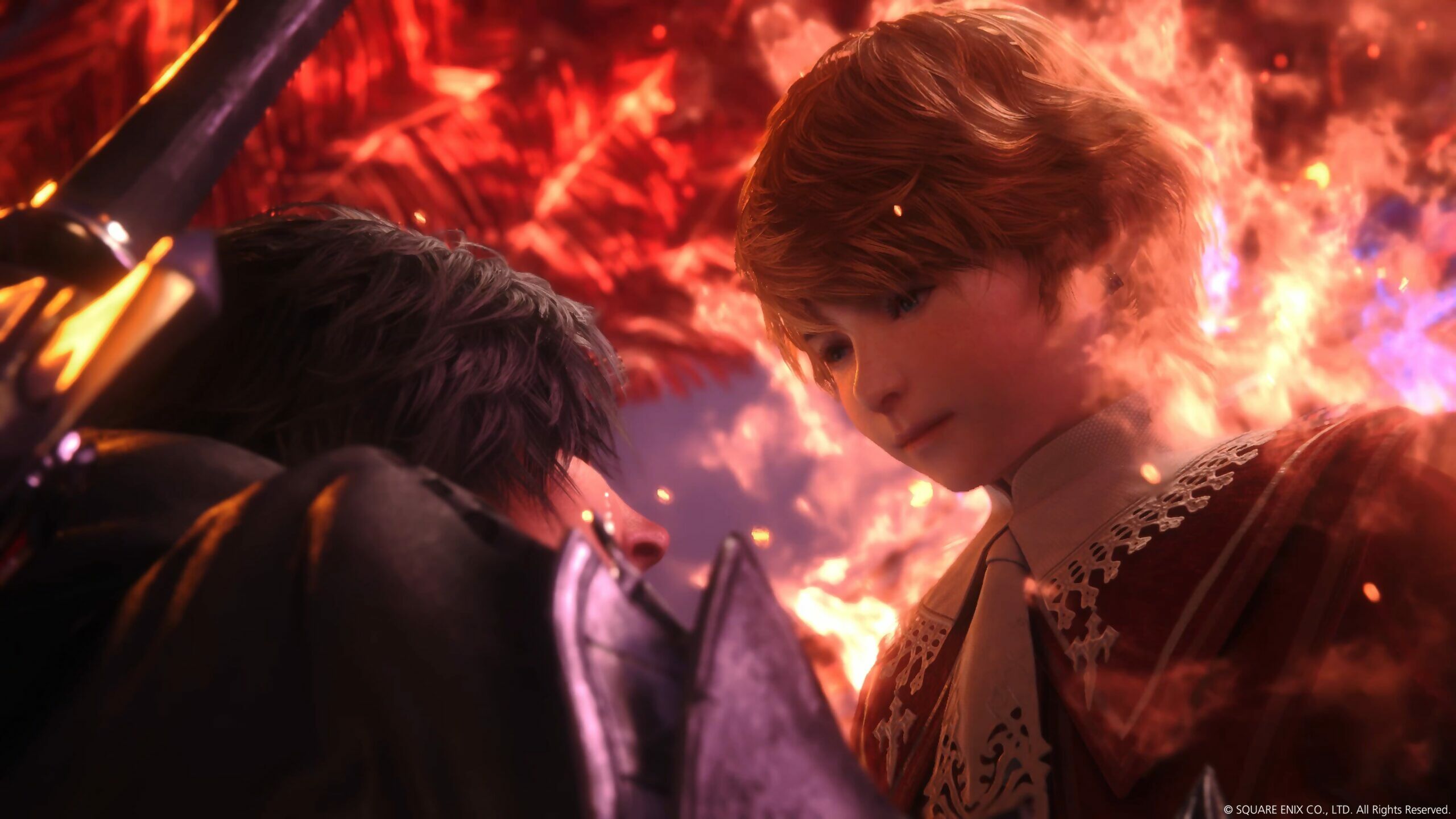
Final Fantasy XVI is another forward-thinking evolution for the series, but Jon Bailes wonders whether it’s in danger of becoming a follower rather than an innovator.
What is the essence of Final Fantasy? The series has morphed so dramatically over 35 years, it’s hard to say what links it all together. Sure, there’s a common thread in the game’s bestiaries and in a range of regular spells and abilities. But everything around that, right down to how you play each game, tends to be more liquid.
And that’s a good thing, too – much more than chocobos, this lack of continuity sits at the core of Final Fantasy’s appeal. For years now, it’s been impossible to guess what the next game will look or feel like, and in triple-A franchises that kind of unpredictability is priceless. True, it doesn’t always work. The linearity of much of Final Fantasy XIII was highly divisive, while Final Fantasy XV was bolted together from a compromised vision that never felt fully coherent. But if that’s the price of experimentation, so be it.
Which brings us to Final Fantasy XVI, a game that wrongfoots us first of all with a setting that’s surprisingly traditional. The fantasy here is of the classic kind, inspired by medieval Europe, an inspiration the series has avoided more often than not since the magitek-infused Final Fantasy VI, as various flavours of industrial sci-fi have filtered into its worlds. Grand castles are the order of the day in this latest epic, along with the politics of warring nations.
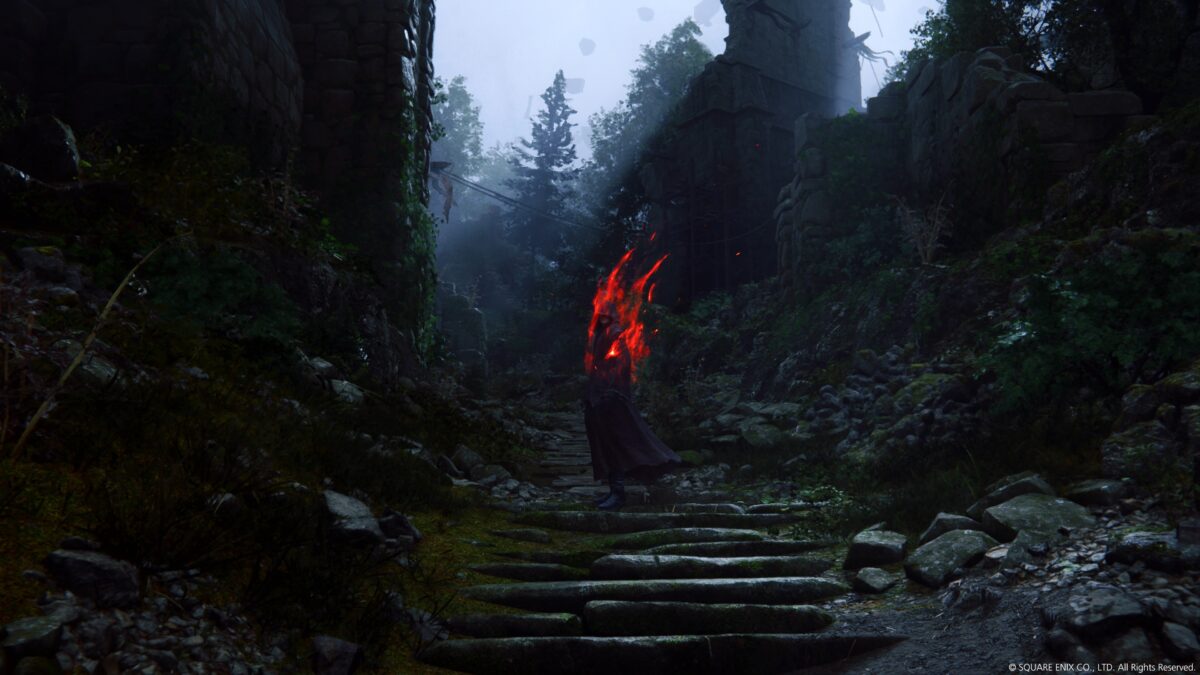
Grand castles – and burning cloaks – are the order of the day in Final Fantasy XVI. Credit: Square Enix.
The real curveball, however, is the game’s combat style, which sees protagonist Clive set about enemies with the real-time vigour and flair of Devil May Cry’s Nero (no coincidence, since XVI’s combat director is ex-Capcom veteran Ryota Suzuki). Even next to the action leanings of XV, it’s a departure – the point where Final Fantasy fully and consciously detaches itself from the turn-based systems of yore.
Honestly, demo footage of Clive’s efforts, in which the burly protector makes split-second dodges and unleashes barrages of blade attacks amid a blitz of pyrotechnics, is quite a shock. It’s not so much an action RPG as an all action RPG, if you will. And with that it raises questions: will battles be won and lost based on reactions rather than tactics? Has Final Fantasy XVI abandoned the spirit of the mainline series?
Well, no. At least not if we consider that the spirit of the mainline series has always been evolution, pushing the envelope of the RPG. Don’t forget that the concept of the ‘Active Time Battle’ was a revelation when it arrived in Final Fantasy IV, and every entry since has had unique systems, many of which have nudged us slowly but surely towards real-time dynamism. In that sense, it could be said that Final Fantasy XVI is making a last decisive step along a long-defined path.
Indeed, it’s been difficult to imagine how the series could go back to its roots since 2006, when Final Fantasy XII turned everything upside down with its brilliant ‘Gambit’ system. Enabling players to automate much of the rote toing and froing of turn-based battling, such as using an antidote whenever a character is poisoned, exposed the inherent repetition in the form. It turns out it’s more involving to programme your team to collaborate via a series of if…then statements than manually select every action yourself.
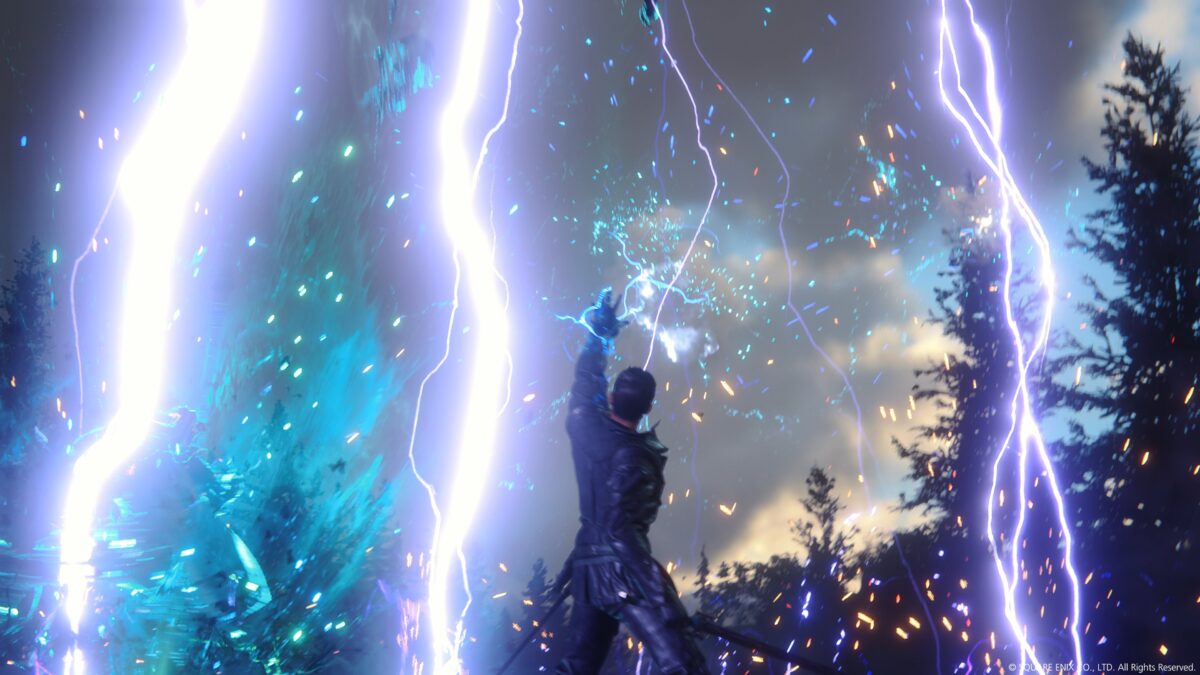
An all-action RPG? Credit: Square Enix.
That’s not all, though. Final Fantasy XVI is also in tune with its older siblings in placing grand spectacle at the forefront of its experience. Final Fantasy games have always been about great scale, awesome architecture and showstopping set pieces. Take the spider tank escape sequence early in VIII, for example – it’s hard to believe now, but that was jaw dropping back in 1999. Yet whereas such moments were only possible in cutscenes back then, now they can unfold within the routines of the game, especially outside of turn-based strictures.
The Eikon battles in Final Fantasy XVI appear to be the epitome of this philosophy. The greatest spectacle in previous games has often come from its summoning animations, as the likes of Ifrit and Bahamut tower over the field to deliver a decisive mega-attack. Now the bouts between these godlike beings, which range from wrestling matches to 3D shooter sequences, could finally give them the starring role their imposing presence warrants.
Still, there’s nothing wrong with some healthy scepticism, and concerns over Final Fantasy XVI’s direction are surely warranted. In particular, we might ask whether this new combat style really is evolution, or whether it’s actually more a case of conformity with other triple-A games. Whatever you thought of the combat in, say, Final Fantasy XII or XV, it wasn’t quite like anything you’d played before. Can the same be said of XVI, with its instantly recognisable blend of action RPG influences?
Yes, there’s common sense behind the move. In the last decade or so, focus has turned for single-player Japanese made RPGs from Square Enix to FromSoftware, with studios around the world now desperate to ape the vibe of Demon’s Souls and its offspring. But we don’t need Final Fantasy XVI to be another Elden Ring, or to occupy spaces already filled by Team Ninja’s Nioh and Wo Long. Final Fantasy should be a leader, even if it sometimes takes us into dead ends, and the more it leans into well-worn patterns of combos, dodges and parries, the more it looks like a follower.
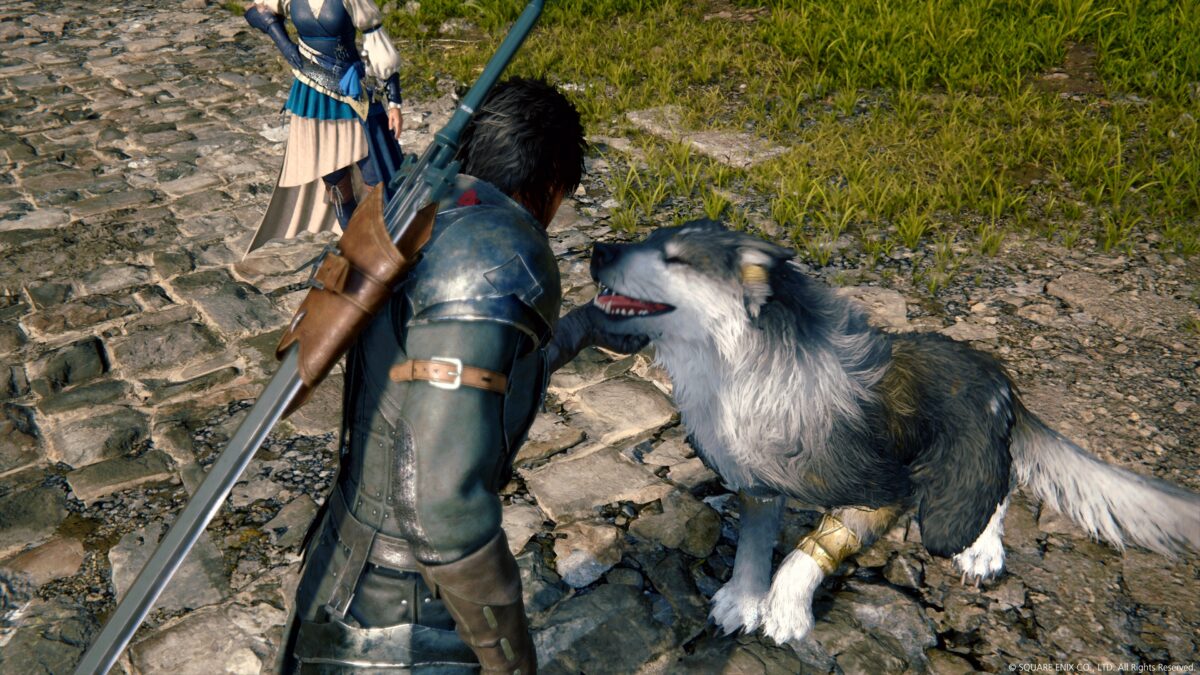
Clive will with his faithful fighting hound, Torgal. Credit: Square Enix.
This isn’t only a Final Fantasy issue either, but an industry-wide one in which triple-A games that fall under the action-adventure umbrella increasingly converge on shared structures and mechanics. RPG ‘elements’ are common now in open-world games, while RPGs themselves adopt third-person action tropes, until genres blend into a formless mass of upgrade trees and optional side quests. Has Final Fantasy XVI been drawn into the gravitational pull of this homogenisation process? Does its direction come from a desire to evolve the RPG again, or from a need to fit in?
And with that, there is one thing lost in transition that connects all previous mainline entries – the party. Clive will have companions on his travels, but these will be fully AI-driven NPCs and it looks like they’ll join and leave at various junctures rather than grow with you throughout the journey. On one hand, this may allow the game’s narrative to be more flexible, but on the other it seems to preclude the coordination between characters and synergies between different ability sets that before were at the heart of the series.
Clive will be accompanied by his faithful fighting hound Torgal, who can be commanded to an extent, so that might help fill in the gap. And for those that don’t want a full action game experience, a set of ‘timely accessories’ will be available to equip that can slow down or automate aspects of combat, such as dodging. No doubt, these are welcome additions, especially when it comes to making the game more accessible. But they aren’t replacements for characters that support each other with unique strengths and form bonds through shared struggles. Is Final Fantasy still Final Fantasy without a party? We’ll find out soon enough.
Final Fantasy XVI is out on 22 June 2023 for PlayStation 5.


